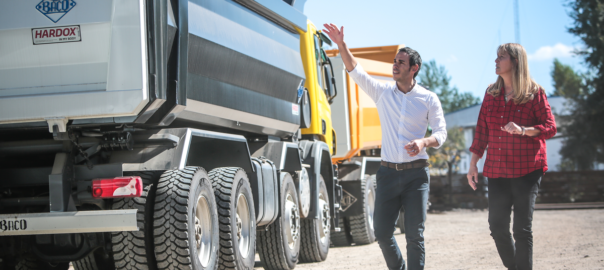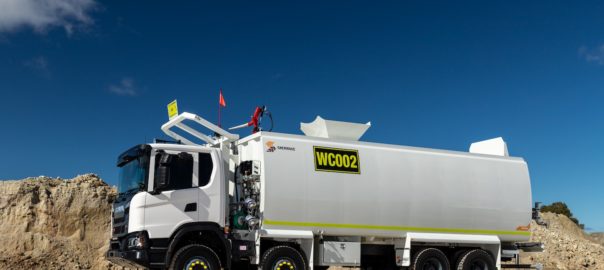The use of SSAB’s Hardox® 500 Tuf wear plate in Argentina-based Industrias Baco’s tipper truck bodies has extended the product lifespan by around 30%, according to the Nordic-based steelmaker.
Industrias Baco, the first company in Argentina to use SSAB’s specialist steel wear plate in tipper truck bodies, was so impressed by these results that 90% of its tipper bodies are now made with Hardox wear plate.
The switch to Hardox steels from traditional steel has been a fundamental part of the company’s increased sales, according to Patricia Meers, Financial Manager at Industrias Baco. “I believe Hardox steel has been a great part of our sales success. SSAB has helped us a great deal with marketing over these past years, and sales of our tippers have increased greatly with the help of Hardox wear plate. Our clients are very satisfied because the Hardox material is much more hard-wearing and versatile.”
Industrias Baco is mainly focused on producing heavy duty tippers for the mining industry.
Sales Coordinator, Nelson Bacolla, said the addition of Hardox 500 Tuf has led to the creation of new truck model with a design that helps improve the unloading process – reducing the unload time and, therefore, increasing productivity and the bottom line.
“It has been very successful,” Bacolla says. “When it comes to the distribution of the load, the truck functions much better with the new bodywork made from the new wear plate. It is the perfect combination.”
Meers witnessed first-hand the positive change that came when the company started to include Hardox material in the tipper bodies about 10 years ago. The company has also been a member of the Hardox In My Body customer program for two years.
“By having the sign on our products, it shows the customer what material we use. Nowadays customers know about Hardox wear plate and are asking for it. They know it means stronger, more lightweight and more hard-wearing tipper trucks that can carry heavier loads,” she said.
Industrias Baco uses Hardox wear plate for three different tipper truck models. They all take advantage of the same conical shape facilitated by the wear plates, accelerating the unloading process. Hardox 500 Tuf wear plate is used in its newest released tipper body model, while Hardox 450 wear plate is used in two tipper body models – one with cutaways on the side and one half-piped version. Hardox wear plate is also used in the sides and floors of the truck bodies.











